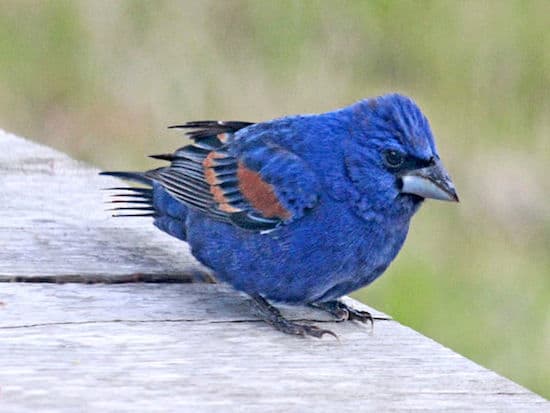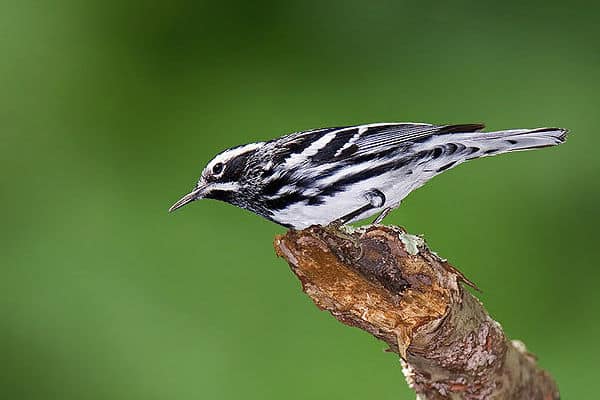Named for its two most obvious field marks, the deep blue color and the thick, powerful bill, it is the heavy brown wingbars that set it apart from similar species. Found in summer throughout most of the southern two-thirds of the United States, the breeding range has been moving northward for more than 25 years.
Its favored habitats are thickets, hedgerows, orchards, and overgrown fields with small shrubs. The song is reminiscent of indigo buntings but is buzzier, lacks the paired phrases, and has an warbling, rhythmic pattern.
The call is a loud chink, stronger and more metallic sounding that those of buntings. Usually sings from small shrubs and other low perches and the nest is rarely more than five or six feet above the ground. Blue grosbeaks do much of their foraging on the ground. In most of the range pairs raise two broods each season.




